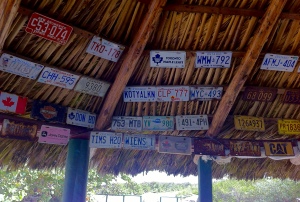AUTHOR: Wayne Stanley
CUISINE: Cape-Malay
COURSE: Main
PREP TIME: 30 mins
COOK TIME: 60 mins
TOTAL TIME: 90 mins
SERVES: 6-8
INGREDIENTS:
1 cup of onion finely chopped
3 cloves of garlic finely chopped
2 tbsp. Fresh ginger finely chopped or grated
1 green pepper cut into 2cm strips (yellow and or orange peppers can be substituted)
3 jalapeño chili peppers – include the seeds of 2 peppers, finely chopped
1 lemon squeezed juice & zest
796 ml can of crushed tomatoes
1 cup chicken stock
125 ml of apricot jam
16 chicken thighs with the skin intact
2 cups fresh cilantro roughly chopped, reserve 1 cup for garnish
*Optional: 2 handfuls of fresh green beans halved, they add color and crunch.
1-2 tbsp. of canola oil, only if using skinless thighs, otherwise use the rendered fat from frying the chicken.
Dry ingredients:
2 tbsp. Garam masala mixture (Garam masala)
1 tbsp. curry powder or 7-8 curry leaves (Curry Tree)
2 tsp. cumin spice
1 tbsp. coriander spice
3 bay leaves
salt and pepper to taste
DIRECTIONS:
**(Make the sides ahead of time – see below)
- In a heated large pot, Dutch oven preferably, sauté the chicken thighs starting skin-side down until the skin is golden. Remove the chicken pieces and set them aside.
- Fry the onions in the rendered fat at medium heat until they are translucent, about 5 minutes. Stir frequently to prevent sticking.
- Add garlic, ginger, green pepper and jalapeño peppers, fry for a further 2 minutes.
- Reduce heat to low, add the dry ingredients, simmer for 2 minutes.
- Add lemon juice, crushed tomatoes, chicken stock, and apricot jam.
- Return the chicken thighs to the pot and bring to the boil, then reduce to low heat, and cook uncovered for 30 minutes. Stir occasionally.
- Start cooking the rice.
- Add the green beans after about 20 minutes.
- Taste for seasoning adding salt and pepper to taste.
- Turn off the heat, add the chopped cilantro, let the curry rest for 5 minutes and serve with the sides and condiments.
- Garnish with fresh cilantro.
I prefer the chicken with the skin on and bone in, but you may choose to debone them. When the curry is almost finished remove the chicken thighs, set them aside and allow them to cool down, and then pull the chicken off of the bones with your fingers and return the pieces to the curry. You may choose to do this if you think your guests would not want to use their hands.
**SUGGESTED SIDES and CONDIMENTS:
Basmati Rice
“South African style Sambals” – see recipe below
Raita – see one of many recipes below
Sliced banana placed in cow’s milk or coconut milk
Shredded coconut to sprinkle
Fruit Chutney e.g. Mrs. Ball’s
(The addition of the sweet ingredients is the Malaysian influence).
BASMATI RICE
2 cups of rice
3 cups of water
2.5 ml of salt
Rinse the rice in cold water, drain and then soak in cold water for 30 minutes.
Bring the water to boil in a medium-sized pot. Add rice and salt. Stir and cover. Simmer over low heat for 15 minutes. Let stand covered for 10 minutes. Add butter to taste and fluff with a fork.
SOUTH AFRICAN STYLE SAMBALS
Sambals are served with most Cape Malay dishes – cool with spicy dishes and warm with bland dishes. Sambals must be crisp and keep their color so are best made just before the meal.
2 fresh tomatoes chopped fine
1 onion chopped fine
1 jalapeño chili pepper chopped fine
125 ml white wine vinegar
75 ml water
1 tsp. sugar
Combine all of the ingredients in a dish that can be covered and place in the fridge.
Serve in small individual dishes with the curry.
RAITA
1 cup of Greek yogurt
I cup of sour cream
1 cucumber coarsely grated, squeeze as much water out as you can
1 tsp. cumin seeds
1-2 sprigs of fresh mint
salt and pepper to taste
Combine all of the ingredients in a dish that can be covered and place in the fridge.
Serve in small individual dishes with the curry.
Wine Pairing:
Although it is difficult to pair wine with foods containing chilies consider these.
White: (fruity) Pinot Gris, Riesling, Sauvignon /Fumé Blanc
Red: (soft and fruity) Pinot Noir, Shiraz, Zinfandel
© Wayne Stanley 2016
WAYNE’S CHICKEN CURRY RECIPE by Wayne Stanley is licensed under a Creative Commons Attribution-ShareAlike 4.0 International License.






